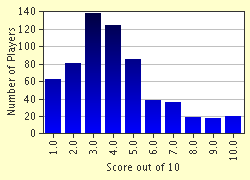
A Terrible Quiz
On living things with dino or deino in their names (or to be pedantic din if precedes a vowel). Dino comes from the Latin or Greek for terrible (as in inspiring terror). Just select the correct definition.
A multiple-choice quiz
by tnrees.
Estimated time: 6 mins.
- Home
- »
- Quizzes
- »
- Science Trivia
- »
- Biology
